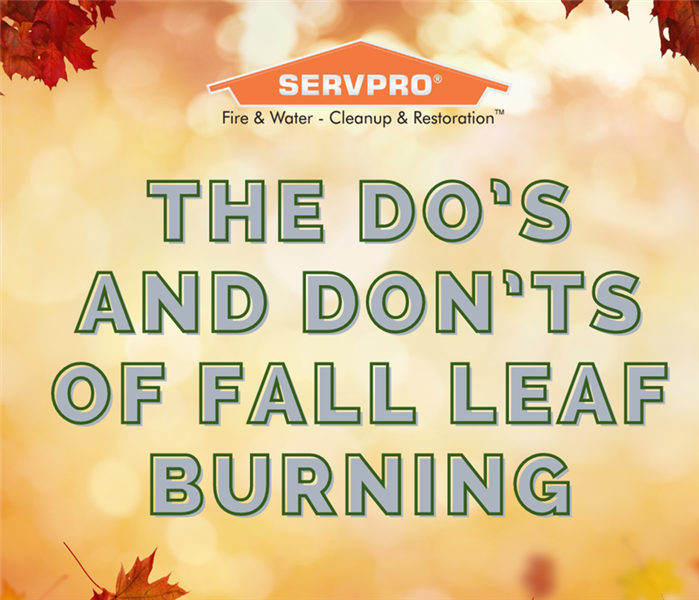The Do’s and Don’ts of Fall Leaf Burning
9/7/2024 (Permalink)
As the leaves begin to change color and fall, many homeowners find themselves with an abundance of leaves in their yards. While some opt for composting or mulching, others choose to burn their leaves. If you’re considering burning your leaves this fall, it’s crucial to do so safely. Improper leaf burning can lead to wildfires, air pollution. Here’s a guide to help you burn your leaves safely and responsibly in Natick, MA.
The Do’s of Leaf Burning
- Check Local Regulations: Before you even consider burning leaves, it’s important to check your local laws and regulations. Some municipalities have strict rules or outright bans on leaf burning due to environmental concerns or fire risks. Always verify if a permit is needed and understand the guidelines you must follow.
- Choose a Safe Location: Pick a location that’s far from your home, sheds, fences, trees, or any other structures. Ensure there’s at least a 50-foot distance between the burning area and any buildings or flammable materials. A flat, open area with little wind is ideal.
- Create a Firebreak: A firebreak is a barrier that prevents the spread of fire. Surround your burn area with a firebreak made of bare soil or non-flammable materials, such as gravel. This helps contain the fire and keeps it from spreading to unintended areas.
- Burn on a Calm, Dry Day: Wind can cause embers to spread quickly, so only burn on a day with little to no wind. Additionally, wet leaves don’t burn well and can create excessive smoke, so choose a dry day for burning.
- Have Water and Tools Ready: Always have a hose, buckets of water, or a fire extinguisher nearby in case the fire gets out of control. A rake or shovel can also help you manage the fire by spreading out the leaves or smothering any rogue flames.
The Don’ts of Leaf Burning
- Don’t Burn Large Piles: Burning a large pile of leaves can be difficult to control. Instead, burn small piles, adding more leaves as the previous ones burn down. This will make it easier to manage the fire and reduce the risk of it spreading.
- Don’t Burn Near Vegetation or Wooded Areas: Burning leaves too close to trees, bushes, or other vegetation can cause the fire to spread quickly. Always maintain a safe distance from any vegetation to prevent accidental wildfires.
- Don’t Leave the Fire Unattended: Never leave a burning pile of leaves unattended. Stay with the fire at all times, and only burn as much as you can monitor. If you need to step away, extinguish the fire completely before doing so.
- Don’t Burn in High Winds or During a Drought: Wind can carry embers far beyond your burn area, potentially igniting other areas. Similarly, dry conditions during a drought increase the likelihood of wildfires. Avoid burning leaves under these conditions to prevent accidental fires.
- Don’t Use Accelerants: Using gasoline, lighter fluid, or other accelerants to start or maintain your fire is dangerous. These substances can cause the fire to become uncontrollable, leading to serious accidents or injuries. Stick to natural methods, such as matches or a lighter, to start your fire.
Alternative Leaf Disposal Methods
If burning leaves seems too risky, consider these safer alternatives:
- Composting: Turn your leaves into nutrient-rich compost for your garden. Over time, they’ll break down and create a valuable soil amendment.
- Mulching: Shred the leaves and use them as mulch around your plants and trees. This not only recycles the leaves but also helps retain moisture in the soil and suppresses weeds.
- Municipal Collection: Many towns offer curbside leaf collection services. Check with your local government to see if this is an option for you.
Burning leaves can be a convenient way to deal with autumn’s bounty, but it comes with risks.
SERVPRO of Natick, Milford is your comprehensive solution for residential and commercial restoration and cleaning services. Our highly trained technicians are available 24/7 to address any water, fire, or storm damage in Natick, MA | Milford, MA | Blackstone, MA | Mendon, MA and surrounding areas.




 24/7 Emergency Service
24/7 Emergency Service
